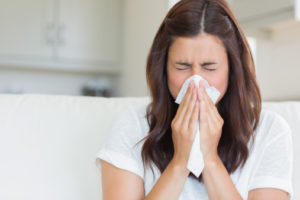
Ronny Carrera, 49, thought he was experiencing symptoms of the flu when he began feeling ill one evening while at home.
“I expressed concern to my wife and she was just as concerned, if not more so and really pushed and encouraged me to consider going to the doctor,” said Carrera. When he began experiencing extreme tingling in his legs and started having difficulty moving, Carrera and his wife quickly went to the emergency center at Memorial Hermann Southeast Hospital.
Doctors assessed Carrera and he was admitted into the hospital with a diagnosis of Guillain-Barre syndrome.
Guillain-Barre syndrome is a rare disorder that occurs when the body’s immune system attacks its nerves causing weakness and tingling in arms and legs. The fast-moving syndrome can quickly spread and cause paralysis and in Carrera’s case, require hospitalization. Additional symptoms include unsteady walking, difficulty speaking, rapid heart rate, difficulty breathing and difficulty with facial and eye movements.
“When doctors informed me of my diagnosis, I was scared but I wanted to know what I needed to do to get better and get better fast,” said Carrera. “I wanted to get back to my family, my wife and children and I wanted to get back to doing activities such as fishing.”
According to the Centers for Disease Control and Prevention, the exact cause of Guillain-Barre syndrome isn’t known but the syndrome is often associated with a viral-like illness prior to onset.
“It was a scary time for me because I went from being able to do so much to being limited and unable to walk on my own,” said Carrera. “I honestly wasn’t sure what was going to happen but my doctors said I would get better and I believed them.”
Carrera’s upper and lower extremity weakness were similar to the weakness experienced by a spinal cord injury patient. After spending a week in the Intensive Care Unit, he was admitted to the inpatient rehabilitation unit at Memorial Hermann Southeast, affiliated with TIRR Memorial Hermann, to start intense rehabilitation and therapy treatment to improve his motion, strength and functional independence.
“For Mr. Carrera, it was great that he sought out immediate treatment for the symptoms he was feeling because there is a critical time period when we must start treatment to stop the body’s breakdown of the nervous system,” said Dr. William Brendel Jr., medical director at Memorial Hermann Southeast Inpatient Rehabilitation Unit and a Physical Medicine and Rehabilitation specialist with Memorial Hermann Medical Group.
“Although it is difficult to pinpoint the exact cause of this syndrome, we can treat the symptoms with intense rehabilitation focusing on improving strength in the lower extremities through gait training and exercise.”
During his stay, therapists worked with Carrera on his strength, range of motion, functional mobility and activities of daily living.
During his month-long stay in inpatient rehabilitation, Carrera made tremendous improvements, going from using a wheelchair to standing and walking with minimal assistance.
“When I was in the hospital, it was hard to see the future and how I would be, but every one of my therapists and Dr. Brendel believed I would get better and I did,” Carrera said.
“I’m very thankful to be back home with my family, going back to work and getting back to doing the things I enjoy to do.”
To learn more about Guillain-Barre and how it’s treated visit http://tirr.memorialhermann.org/programs-specialties/guillain-barre/
 INFLUENZA, an airborne, highly contagious, often lethal viral infection, has the potential for extensive dissemination, local epidemics, even a global pandemic, that can result in widespread death, disability and socio-economic disruption.
INFLUENZA, an airborne, highly contagious, often lethal viral infection, has the potential for extensive dissemination, local epidemics, even a global pandemic, that can result in widespread death, disability and socio-economic disruption.

